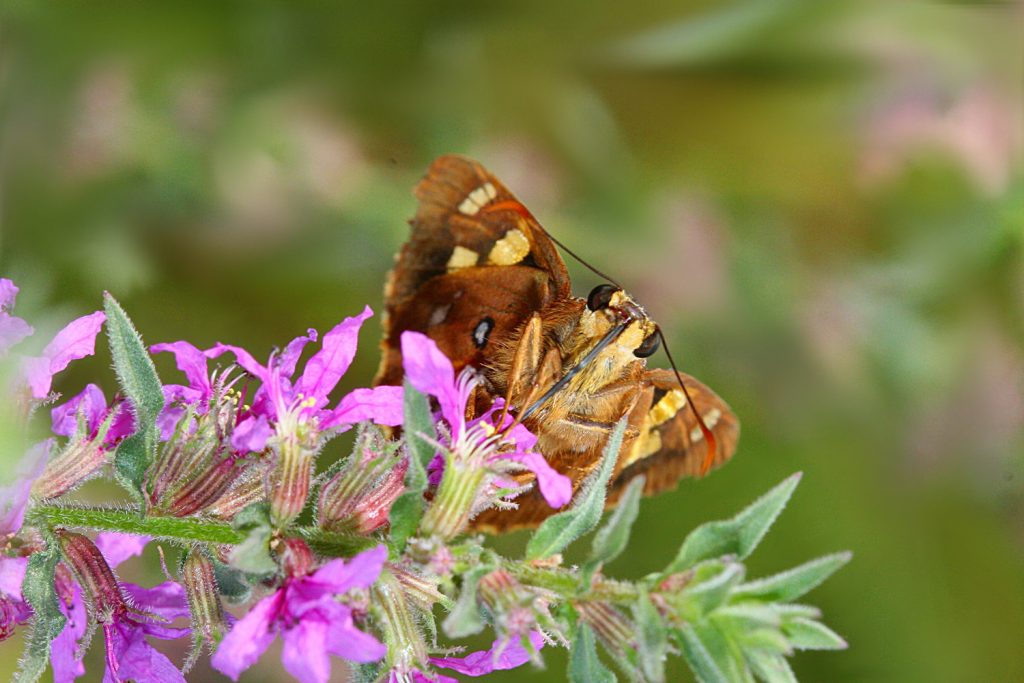To keep ecosystems functioning well, it is important to provide indigenous food sources for beneficial insects throughout the entire year.
As a result, insects that thrive in late summer will have enough energy to continue their daily routines. These routines often include providing helpful services to your backyard garden by assisting with pollination, composting and aphid control.
The challenge is finding indigenous plants that can cope with the arduous and dry conditions of the Australian summer. Soaring temperatures from early summer, starting in November, can put pressure on plants to survive. Thankfully, Victorian plants have evolved traits to help them cope in the month of November. Red Box (Eucalyptus polyanthemos), for example, possess leaves with a silvery shine. This colour allows the leaves to reflect more of the sun’s photon spectrum than a darker leaf colour does. In combination with a large leaf surface area, which helps maximise transpiration (the evaporation of water from plant leaves), trees such as Red Box can control their internal temperature range. Some Acacias such as Early Wattle (Acacia genistifolia) and Prickly Moses (Acacia verticillata) have waxy nodes (they don’t have leaves), which help reduce water loss when opening their pores to photosynthesise.
From December onwards it becomes increasingly difficult to supply food sources in your garden for insects that provide valuable services such as pollination. Most indigenous wildflowers, shrubs, Acacias and eucalypt trees, which supply the bulk of indigenous nectar and pollen during late spring and early summer, have finished flowering by this time.
So the burning question is: what plants flower and provide sustenance for insects from December to February? During the last two summers, I’ve been paying particular attention to this question. It is an important question, because this is the period when butterflies and native bees thrive. My observations have drawn me to the importance of wetlands and ephemeral water bodies in Victoria.

Plants in these ecosystems often have an abundance of water. The water they suck up through their roots eventually makes its way to the leaves. The water pumps up the leaves, making them vigorous and strong. Healthy leaves mean that there is more surface area to photosynthesise, and as a result, more energy to produce flowers. So while plants in dry forests have resorted to dying or hiding underground, wetland plants can flower en masse.
Purple Loosestrife (Lythrum salicaria) and Slender Knotweed (Persicaria decipiens) are both easy to grow, and provide a lot of nectar and pollen for butterflies, day-flying moths, and bees. These species include the Common Blue Butterfly, the Ochre Skipper Butterfly and moths from the Agaristinae family. Additionally, Purple Loosestrife is a haven for Blue-banded, Resin, Chequered Cuckoo and Leafcutter Bees. These bees not only pollinate wetland plants, but will also pollinate other plants in the vicinity. In my backyard, Blue-banded Bees are visiting my wetland, herb garden (Catnip, Lemon-balm, Mint), and tomato plants – pollinating as they go.
![Slender Knotweed (Persicaria decipiens) are both easy to grow, and provide a lot of nectar and pollen for butterflies, day-flying moths, and bees. Image by Harry Rose [] from Wikimedia Commons.](https://www.rememberthewild.org.au/wp-content/uploads/2018/05/Slender-knotweed.jpg)
With so much insect diversity around wetlands, it is no wonder predatory arthropods feel at home around these water bodies. St Andrews Cross Spiders make their webs between Carex leaves, waiting for insects to become trapped, while dragonflies and robber flies search the wetland zone for small insects, such as mosquitoes, to feast on.
![St Andrews Cross Spiders make their webs between Carex leaves, waiting for insects to become trapped. Image by Stu's Images [CC BY-SA 3.0] from Wikimedia Commons.](https://www.rememberthewild.org.au/wp-content/uploads/2018/05/1024px-Argiope_keyserlingi_St_Andrews_Cross_Spider_Sydney.jpg)
Banner image is of a Chequered Cuckoo Bee feeding on Purple Loosestrife and is courtesy of Michael Smith.


Leave a Reply